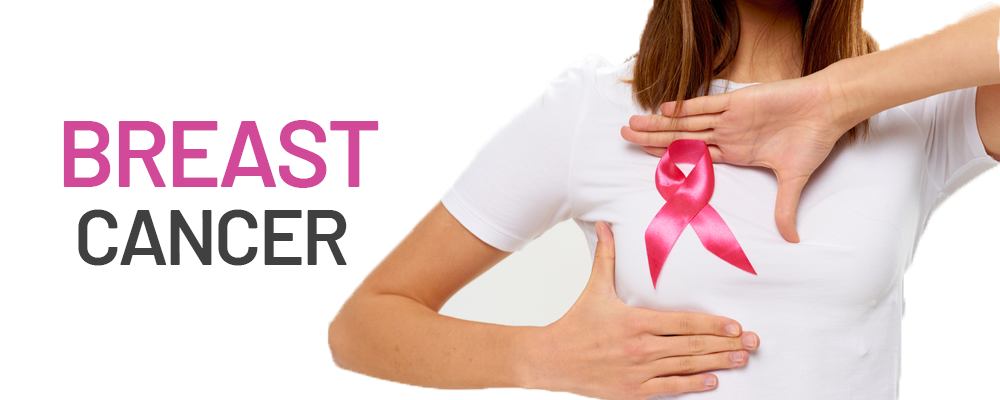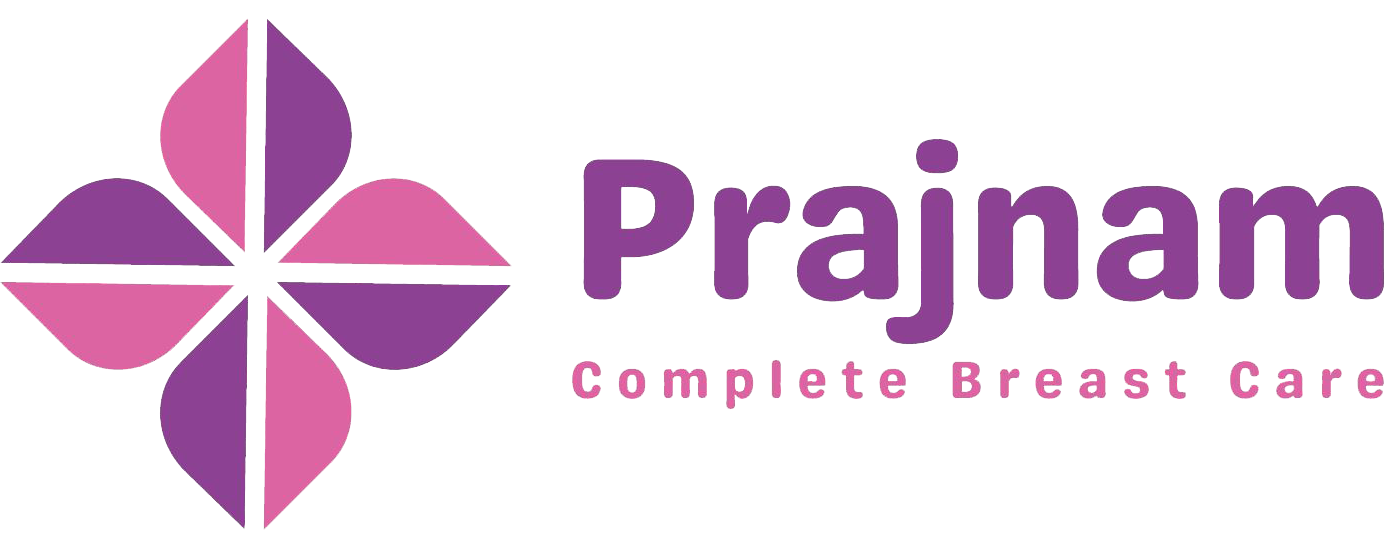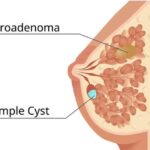
Breast cancer is one of the most common cancers among women worldwide. It occurs when abnormal cells in the breast grow uncontrollably, forming a tumor that can be benign (non-cancerous) or malignant (cancerous). Early detection significantly improves the chances of successful treatment, making breast self-exams, regular screenings, and medical awareness crucial.
Symptoms of Breast Cancer
- A lump in the breast or underarm
- Changes in breast shape or size
- Nipple discharge (bloody or clear)
- Skin dimpling or thickening
- Redness, swelling, or irritation on the breast
- Nipple retraction (turning inward)
- Persistent breast pain
Causes and Risk Factors
While the exact cause of breast cancer remains unknown, several risk factors increase the likelihood of developing the disease.
- Genetic Factors
- Family history of breast or ovarian cancer.
- Mutations in BRCA1 and BRCA2 genes.
- Hormonal Factors
- Early menstruation (before age 12) or late menopause.
- Hormone replacement therapy (HRT).
- Lifestyle-Related Factors
- Obesity and poor diet.
- Lack of physical activity.
- Alcohol and smoking.
- Age and Gender
- More common in women over 50.
- Men can also develop breast cancer, though it is rare.
Types of Breast Cancer
- Ductal Carcinoma in Situ (DCIS)
- Early-stage, non-invasive cancer confined to the milk ducts.
- Invasive Ductal Carcinoma (IDC)
- Most common type, spreading beyond the milk ducts into surrounding breast tissue.
- Lobular Carcinoma in Situ (LCIS)
- A non-invasive condition that increases future breast cancer risk.
- Inflammatory Breast Cancer (IBC)
- A rare but aggressive form causing redness and swelling.
Diagnosis of Breast Cancer
- Mammogram – X-ray imaging for early detection.
- Ultrasound – Used for further evaluation of suspicious lumps.
- MRI Scan – Provides a detailed image of breast tissues.
- Biopsy – Removal of a small tissue sample for laboratory analysis.
Treatment Options
- Surgery
- Lumpectomy – Removes the tumor while preserving the breast.
- Mastectomy – Full or partial removal of the breast.
- Radiation Therapy
- Uses high-energy rays to destroy cancer cells and prevent recurrence.
- Chemotherapy
- Uses anti-cancer drugs to shrink or eliminate tumors.
- Targeted Therapy
- Focuses on specific cancer-causing molecules to stop growth.
- Hormonal Therapy
- Blocks estrogen or progesterone, which can fuel cancer growth.
When to Seek Medical Attention
- A new lump or sudden changes in the breast.
- Unexplained nipple discharge or skin changes.
- Persistent breast pain or swelling.
Conclusion
At Prajnam Breast Care Centre, we are committed to ensuring that every woman receives timely diagnosis, advanced treatment, and compassionate care for all breast-related conditions. Our goal is to empower women with awareness, education, and world-class medical expertise, helping them take charge of their breast health. With cutting-edge screening technologies and a patient-first approach, we strive to detect breast diseases early, provide the best possible treatment, and improve survival rates.
If you notice any unusual breast changes, don’t wait—schedule a consultation today for expert care and peace of mind.
Treatments
EXCELLENTTrustindex verifies that the original source of the review is Google. Dr. Suchana is absolutely a pleasing personality and doesn't get you tense. I am glad I came to her. Besides, she doesn't run like a business and follows ethical conduct.Posted onTrustindex verifies that the original source of the review is Google. Highly recommend.Posted onTrustindex verifies that the original source of the review is Google. Dr. Suchana was great. We were late beyond 7 pm but they were so nice they waited for us and also my wife had done with all her test. Dr also gave ample time explaining us and we were at peace. I recommend Prajam.Posted onTrustindex verifies that the original source of the review is Google. The process is very humane. They are very patient and take care of all possibilities. I am glad that I found this clinic.Posted onTrustindex verifies that the original source of the review is Google. Very good experience with Dr.Suchna , she is highly knowledgeable and answers all the questions very patiently. Highly recommended for those who are looking for Breast related hospitalPosted onTrustindex verifies that the original source of the review is Google. Amazing Doctor. If you are in Prajnam (Doc Suchana) you are in safe hand.Posted onTrustindex verifies that the original source of the review is Google. Well explained and the whole Ultrasound procedure was very comfortable

